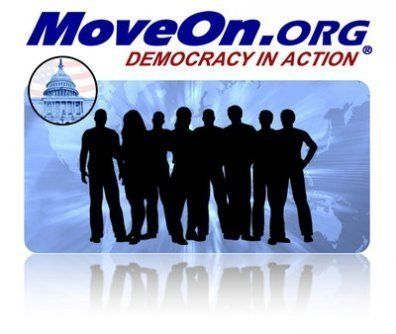
Five years to the day after American forces began their campaign of "shock and awe" in Iraq, opponents of the war gathered in Washington. While some came with bullhorns and drums and flag-draped coffins, danced down K Street and confronted legislators on Capitol Hill, others formed a quiet vigil in Lafayette Park across from the White House. Here there were no bullhorns or drums. Instead, there were a few news cameras, a banner that read Invest in America, Not Endless War in Iraq and a clutch of several dozen members of MoveOn. Bill Hamm, a retired Air Force pilot from Texas who had come to Washington for the Take Back America conference, told me that during his military career, fellow pilots often gave him push back because of his liberal politics. But, he said, "I think that's changing now." Hamm told me that back in Austin, where he and his wife serve as regional coordinators for MoveOn's local councils, his wife was organizing a 150-person vigil outside the governor's mansion. Because of "war on terror" restrictions they were told they couldn't bring candles. "So they're going to use flashlights."
This year, MoveOn turns ten. News of the organization's advanced age tends to elicit the same startled response as word of a childhood star's divorce. But more important, the anniversary serves to highlight just how far the organization has come. What started as a simple one-sentence petition hastily posted to the web has evolved into the most readily identifiable group in the vanguard of a revived progressivism, with a membership that exceeds 3 million. Capable of dominating a news cycle with a single ad and raising millions of dollars with a lone e-mail, MoveOn pioneered an entire approach to conducting politics through the Internet that has been replicated and spun off across the country and around the globe, an approach that, as the Obama campaign has dramatically demonstrated, has permanently transformed the landscape of American politics. And yet the roots of its success remain largely misunderstood.
This is in large part because MoveOn has been viewed through the distorting lens of a four-decade culture-war narrative, one whose labels have long outlasted the movements and dynamics that gave rise to them. In 1968, as the country approached what seemed to many at the time something like a civil war, Richard Nixon addressed the Republican National Convention in Miami Beach. He described "cities enveloped in flame...sirens in the night...Americans hating each other, fighting each other, killing each other at home." Amid this tumult and chaos, Nixon presented himself as a tribune for those who weren't in the streets, who weren't seeking out confrontation and attention, "the forgotten Americans," he called them, "the non-shouters."
Forty years later, despite tectonic shifts in demographics and politics, our political map still bears the same key: a decent silent majority on one side besieged by a zealous, angry, out-of-touch left on the other. For movement conservatives and establishment centrists alike, MoveOn is just a new name for an old foe. Bill O'Reilly has called it "vicious," "radical," full of "fanatical left-wingers" who are blackmailing the Democratic Party. John McCain, not to be outdone, responded to the "General Betray Us" ad by telling a Republican audience this past fall that MoveOn "ought to be thrown out of this country." Ostensibly mainstream voices like CNN's Campbell Brown have referred to MoveOn as "American insurgents," while Peter Beinart, in a 2004 cover essay in The New Republic, suggested that MoveOn be purged from the center left just as communists once were. Democrats have gotten in on the act as well: Hillary Clinton told donors at a private fundraiser that MoveOn had "intimidated" her supporters in the caucus states, and Barack Obama took a veiled swipe at the group in his recent speech on patriotism.